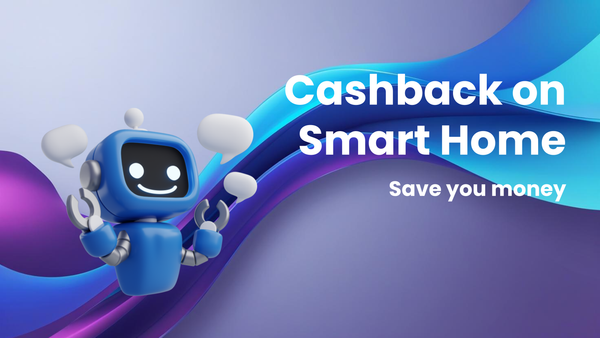How to Use Cashback Offers: A Beginner's Guide Tutorial

How to Use Cashback Offers: A Beginner's Guide Tutorial
Cashback offers have become increasingly popular, offering a simple way to save money on everyday purchases. From groceries to travel to online shopping, you can potentially earn a percentage back on almost anything you buy. However, navigating the world of cashback can feel overwhelming for beginners. This comprehensive guide will walk you through everything you need to know about cashback, from understanding the different types of offers to maximizing your earnings.
What is Cashback?
Cashback is essentially a rebate offered by retailers or financial institutions as an incentive for customers to spend money. Instead of a discount at the point of sale, you receive a percentage of your purchase back after you've made the transaction. This reward can be delivered in various forms, such as statement credits, gift cards, or even direct deposits into your bank account.
Why Use Cashback Offers?
The benefits of using cashback offers are straightforward:
- Save Money: This is the primary reason. Over time, even small cashback percentages can add up to significant savings.
- Passive Income: Once you've set up your cashback systems, earning rewards becomes almost passive. You're simply being rewarded for purchases you would make anyway.
- Budgeting Tool: Being mindful of cashback opportunities can encourage you to be more strategic about your spending and stick to your budget.
- Explore New Products and Services: Attractive cashback deals might incentivize you to try new brands or services that you might not have considered otherwise.
Types of Cashback Offers:
Cashback offers come in several forms, each with its own advantages and considerations. Understanding the different types is crucial for choosing the right options for your spending habits.
- Cashback Credit Cards:
- How they work: These credit cards offer a percentage of your spending back as cash, points, or miles. The cashback rate typically ranges from 1% to 5% on specific spending categories, with some cards offering a flat rate on all purchases.
- Pros: Simple to use, rewards are earned automatically on eligible purchases, potential for high cashback rates on specific categories.
- Cons: Requires responsible credit card usage to avoid interest charges and debt, annual fees may apply to some cards, cashback rates can vary depending on spending categories.
- Example: A credit card offering 3% cashback on groceries and 1% on all other purchases. If you spend $500 on groceries and $1000 on other purchases in a month, you would earn $15 in grocery cashback and $10 in other cashback, totaling $25.
- Key Considerations: Choose a card that aligns with your spending habits. If you spend a lot on gas, a card with a high gas cashback rate would be ideal. Always pay your balance in full and on time to avoid interest charges, which can negate the benefits of cashback. Carefully review the terms and conditions regarding cashback redemption and potential fees.
- Cashback Websites and Apps:
- How they work: These platforms partner with retailers to offer cashback on purchases made through their links or app. You typically need to create an account, browse the available offers, and click through to the retailer's website to make your purchase. The website tracks your purchase and credits your account with the cashback amount.
- Pros: Wide variety of retailers and offers, often higher cashback rates than credit cards, can be used in conjunction with credit card rewards.
- Cons: Requires an extra step in the purchasing process, cashback may not be applied automatically, potential for delays in cashback processing, may require a minimum balance to cash out.
- Examples: Rakuten (formerly Ebates), Swagbucks, TopCashback, Honey (browser extension).
- Key Considerations: Compare cashback rates across different platforms before making a purchase. Read the terms and conditions regarding cashback exclusions, processing times, and payment methods. Ensure the website or app is reputable and secure to protect your personal information.
- In-Store Cashback Programs:
- How they work: Many retailers offer their own loyalty programs that include cashback rewards. You typically need to sign up for the program and use a loyalty card or app when making purchases in-store. Cashback is usually credited to your account and can be redeemed for future purchases at the same retailer.
- Pros: Easy to use if you frequently shop at the participating retailer, often includes other perks like exclusive discounts and early access to sales.
- Cons: Limited to specific retailers, cashback can only be redeemed at the same retailer, rewards may expire.
- Examples: CVS ExtraCare, Walgreens Balance Rewards, Kroger Rewards.
- Key Considerations: Determine if the retailer's cashback program aligns with your shopping habits. Understand the terms and conditions regarding cashback redemption, expiration dates, and potential restrictions. Make sure to use your loyalty card or app consistently to earn rewards on every purchase.
- Cashback Apps for Groceries and Restaurants:
- How they work: These apps offer cashback on specific grocery items or restaurant meals. You typically need to browse the available offers in the app, purchase the qualifying items or meals, and then scan your receipt to verify your purchase. Cashback is credited to your account and can be redeemed once you reach a certain threshold.
- Pros: Targeted offers can save you money on items you already buy, easy to use receipt scanning process.
- Cons: Requires manual receipt submission, offers are often limited to specific brands or products, may take time for cashback to be processed.
- Examples: Ibotta, Fetch Rewards, Checkout 51.
- Key Considerations: Check the app regularly for new offers that align with your shopping list. Pay attention to the terms and conditions regarding offer expiration dates, purchase requirements, and receipt submission guidelines. Combine these offers with coupons for even greater savings.
- Bank Account Cashback Rewards:
- How they work: Some banks offer cashback rewards on debit card purchases or for meeting certain account requirements, such as maintaining a minimum balance or setting up direct deposit.
- Pros: Simple to earn rewards on everyday debit card purchases, encourages responsible banking habits.
- Cons: Cashback rates are often lower than credit card rewards, debit card protection policies may be less comprehensive than credit card protections.
- Key Considerations: Compare the cashback rates and account requirements of different banks. Consider the other benefits offered by the bank, such as online banking tools and customer service.
How to Maximize Your Cashback Earnings:
To truly benefit from cashback offers, it's essential to develop a strategic approach. Here are some tips to maximize your earnings:
- Choose the Right Cashback Programs:
- Analyze Your Spending Habits: Track your spending for a month or two to identify your largest spending categories (e.g., groceries, gas, dining out, travel).
- Match Programs to Your Spending: Select cashback programs that offer the highest rewards in your most frequent spending categories.
- Diversify Your Portfolio: Consider using a combination of cashback credit cards, websites, and apps to cover all your spending needs.
- Stack Cashback Offers:
- Combine Offers: Look for opportunities to combine cashback offers from different sources. For example, use a cashback credit card to make a purchase through a cashback website or app.
- Layering Strategies: Use store coupons or loyalty programs in conjunction with cashback offers to maximize your savings.
- Example: Purchase an item through Rakuten (cashback website), pay with a cashback credit card, and use a store coupon to reduce the price. You'll earn cashback from Rakuten, cashback from your credit card, and save money with the coupon.
- Stay Organized and Track Your Rewards:
- Keep Records: Maintain a spreadsheet or use a budgeting app to track your cashback earnings from different programs.
- Set Reminders: Set reminders to redeem your cashback rewards before they expire.
- Monitor Your Accounts: Regularly check your accounts to ensure that cashback is being credited correctly.
- Read the Fine Print:
- Understand Terms and Conditions: Carefully read the terms and conditions of each cashback program to understand the rules, restrictions, and exclusions.
- Beware of Exclusions: Be aware of common exclusions, such as gift card purchases, taxes, and shipping fees.
- Pay Attention to Expiration Dates: Note any expiration dates for offers or rewards.
- Utilize Browser Extensions:
- Automated Cashback Alerts: Install browser extensions like Honey or Rakuten to automatically find and apply cashback offers while you browse online.
- Comparison Shopping: These extensions can also compare prices across different retailers to ensure you're getting the best deal.
- Leverage Referral Programs:
- Share with Friends and Family: Many cashback programs offer referral bonuses for inviting new users.
- Expand Your Network: Share your referral links on social media or with your network to earn additional rewards.
Potential Downsides of Cashback Offers:
While cashback offers are generally beneficial, it's important to be aware of the potential downsides:
- Temptation to Overspend: The allure of cashback can lead to impulsive purchases or overspending in order to reach a certain cashback threshold. Always stick to your budget and avoid buying things you don't need just to earn rewards.
- Complexity: Managing multiple cashback programs and tracking rewards can become time-consuming and overwhelming. Start with a few programs and gradually expand as you become more comfortable.
- Tax Implications: Cashback rewards may be considered taxable income in certain situations. Consult with a tax professional to determine if your cashback earnings are subject to taxation.
- Data Privacy Concerns: Cashback websites and apps collect data about your spending habits, which may raise privacy concerns. Choose reputable platforms and review their privacy policies carefully.
Getting Started with Cashback:
Here's a step-by-step guide to get started with cashback offers:
- Assess Your Spending: Analyze your spending habits to identify your largest spending categories.
- Research Cashback Programs: Research different cashback credit cards, websites, and apps to find programs that align with your spending habits.
- Sign Up for Programs: Create accounts with your chosen cashback programs.
- Install Browser Extensions: Install browser extensions for automated cashback alerts.
- Start Shopping Strategically: Browse for offers before making purchases and use the appropriate cashback methods (e.g., clicking through cashback website links, scanning receipts).
- Track Your Earnings: Track your cashback earnings and redeem your rewards regularly.
- Stay Informed: Keep up-to-date with the latest cashback offers and promotions.
Conclusion:
Cashback offers can be a valuable tool for saving money on everyday purchases. By understanding the different types of offers, choosing the right programs, and maximizing your earnings through strategic shopping, you can significantly boost your savings over time. Remember to be mindful of the potential downsides, such as the temptation to overspend, and always prioritize responsible financial habits. With a little effort and planning, you can become a cashback pro and enjoy the rewards of your smart spending.




